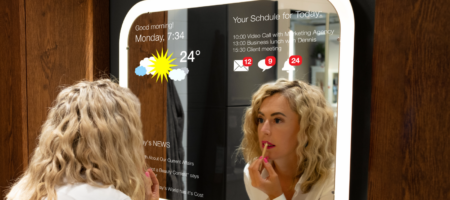Qualitative research methods have long been used to comprehend people’s behaviours and their social reality meaning. intO is known for orchestrating progressive, remote qualitative methodologies around the world – and as people and business models adapt and evolve, so do the methods designed and implemented by our team.
The gig economy model: A labour force that’s one step removed
Unlike most business models, gig economy businesses are powered by users who are also providers. Paying customers are serviced by workers whose only connection to the gig economy business is via a platform or application.
Whether these workers are defined as ‘employees’ or not often depends on the legislation of different regional markets. Regardless, it’s safe to say that businesses operating in this space have far less access to (and autonomy over) their employees/workers than businesses with more traditional models.
Workers are the absolute core of a gig economy brand’s offer
Despite operating at a distance from the company HQ, the individuals delivering the services that drive revenue for gig economy businesses are absolutely critical. Not only because they are the brand’s touchpoint for the paying customer, but also because they are the absolute core of the brand’s offer. Without a high volume of drivers, there would be no Uber.
Digital technology powers the operations of a gig economy business to make logistics efficient and profitable, but it is so far unable to provide detailed and nuanced insight into the complexities of human attitudes, motivations and behaviour. Ambitious gig economy brands know that maintaining a deep understanding of their workers is vital. At the simplest level, they need to know why and when workers sign up, what puts those who do not off, and why people leave.
Gig economy research participants: A recruitment challenge
While gig economy workers are often very visible in our day-to-day lives, recruiting high-quality worker participants is often a challenge for the following reasons:
- Familiarity with the context
A vast majority of gig workers are immigrants, and we require them to have a work visa (or equivalent) and to have been settled in the country of research for long enough to guarantee their cultural and contextual knowledge (unless their experiences as an immigrant worker are relevant to the research itself!)
Typically, participants need to be able to fluently express their thoughts and ideas. As many gig workers are immigrants, careful screening needs to assess whether language barriers could challenge the integrity of the participant insights
Regardless of whether gig workers are natives or immigrants, they often have more than one job, and their availability for participation is therefore limited. When screening candidates, it’s really important to be super clear about their requirements of involvement
Locals or immigrant gig workers will probably have a smartphone. However, if they are required for alternative activities – like one-to-one interviews via zoom or attending a co-creation session – this can be tricky as they might not have ready access to a personal computer and a reliable wifi connection
Autoethnography as a solution: A recent intO project
Recruiting quality participants is the crucial foundation for any research project. As a usual way to go, we researchers search for the most suitable participants for each brief. These participants respond to precise criteria and are thoroughly screened. Then, through a series of methods, we develop relationships that enable two-way communication and allow us to identify actionable opportunities and build better products and services for everyone involved.
However, it’s possible to diverge from this usual approach when conceptual and practical reasons call for it. Recently, we had the chance to use autoethnography methodologies to excel our renowned research capabilities on the ground. A fast-growing delivery brand was eager to make their onboarding process more efficient and attractive with new couriers in Australia. In response to the brief, we were able to really put them in the shoes of the research participants, and the people and digital sign-up journeys that they wished to understand better.
Autoethnography: in other words
(as defined by the FQS – Forum Qualitative Sozialforschung)
Autoethnography is an approach to research that seeks to describe and systematically analyse personal experience in order to understand cultural experience. (..) A researcher uses tenets of autobiography and ethnography to do and write autoethnography. Thus, as a method, autoethnography is both process and product.
What made autoethnography suitable?
This was a fascinating and not so common commission. In context, this inquiry wasn’t an independent project but was part of an in-house program that was already in progress at the company. Our client, therefore, had much clarity on exactly what was needed, and when, from this research.
Aside from avoiding the recruitment challenges for gig workers, as explored earlier in this article, it was also clear that the brief required the participants to have a precise mix of cultural and technical UX knowledge. This would remove a layer of information analysis, and both participants and stakeholders would be able to share the same ‘language’. This meant that the stakeholders could digest and react to information at a pace, evolving and adapting the work that their in-house project needed to prioritise.
Two of intO’s UX researchers/designers became couriers for a fortnight
At intO we pride ourselves on our ability to reach any market with knowledgeable Local Researchers that become the company’s eyes and senses on the ground. Our UX researchers/designers in Australia were eager to be involved in this project – even though it required becoming a courier in the wintertime!
“In my opinion, to find solutions, it is crucial to see the real problems first-hand. Becoming a courier transformed me immediately into the target audience of this research. I was doing the job and experiencing real problems.
Of course, it is totally different from being a courier when you need it as an income instead of doing it for research purposes but in fact, doing it again after many years was highly insightful. This time, I concentrated on each step of the process, every detail, and collected factual information because I had first-hand knowledge on this occasion.” Christian – intO’s Local Researcher, Australia.

“As researchers, one of the most important skill sets is empathy, to be able to stand in the users’ shoes, and see and understand the subject matter from their perspective. So how better to do this than to actually become the user, stand in their shoes, doing what they do, seeing what they see.
Although I had a different motivation and purpose, from onboarding, delivering to figuring out how to make a livable income in the gig economy, this research let me experience first-hand the pains and gains of a gig economy worker. I don’t often get to do autoethnographic research, but for this project it was perfect. I got to apply both a user and designer lens towards creating a better solution.” Isabella – intO’s Local Researcher, Australia.
So, how exactly did it work?
During this process, data collection management was crucial. As there were different teams interested in this study, we opted for:
- Visual experience. We used an online board with screenshots of every little detail of the process. This happened almost simultaneously as things were happening, so there wasn’t a chance of missing any piece of information or forgetting about it
- Instant perceptions. The screenshots had contextual and technical annotations added to them as our researchers were capturing them. We used a very simple colour coding system to differentiate the type of annotations
- Constant checking-in. We opted to share the data collection board openly, and scheduled weekly live read-out meetings so all the company’s stakeholders could hear and ask our researchers questions directly, at every stage. Even though this might sound overwhelming, it allowed us to clarify and nurture the key questions. The cultural exchange was constantly shaping the scope of this particular project as well as the team’s in-house work. Check out Laetitia Sfez’s article if you’d like to learn more about live read-outs as a research deliverable.
Autoethnography is a great option when participants are challenging to recruit and when a specialised layer of knowledge is required (often to save time). For sure, this methodology and approach was a winning solution for our client. However, this isn’t always suitable for every research objective. If you are keen to read more about the pros and cons of this methodology, this journal article at qualitative-research.net delivers a good overview.

Alejandra is a Project Lead at intO. She works with local and global brands to help them develop their businesses, and also uses her creative approach to empower people so their own ideas bring benefit to society. Alejandra combines her deep knowledge of cultures with her design-management capabilities, and is motivated by bridging cultural boundaries.
She holds a BA qualification in Industrial Design from the National University of Colombia, and an MA from Hochschule Anhalt University in Germany. She has lived in Germany and is currently based in Cali, Colombia. She speaks Spanish and English.
Want to know more about our approach to complex recruitment requirements? Contact [email protected]
Posted on October 8th, 2021
Uncategorized Publications Research






